SWOT-AHP Analysis of BIM Technology Utilization in the Japanese Construction Industry
Abstract
1. Introduction
2. Literature Review
2.1. SWOT Analysis
2.2. AHP
2.3. SWOT-AHP
2.4. BIM Technology
2.4.1. Strengths
2.4.2. Weaknesses
2.4.3. Opportunity
2.4.4. Threats
3. Methods
3.1. Research Procedures and Methods
3.2. Hierarchy Configuration
3.3. Conducting a Survey
3.4. SWOT-AHP Analysis Method
4. Results
4.1. Basic Attributes of the Respondents
4.2. SWOT-AHP Analysis Results
4.2.1. Calculation of the Average Score
4.2.2. Derivation of Importance
4.2.3. Consistency Verification
4.2.4. Identification of Key Indicators
4.2.5. Sensitivity Analysis
4.3. Results Analysis and Strategy Proposal
5. Discussion
6. Conclusions
Author Contributions
Funding
Institutional Review Board Statement
Data Availability Statement
Conflicts of Interest
Appendix A
| Strength | None | Small | Medium | Large | Huge |
|---|---|---|---|---|---|
| S1 | 4 (1.88%) | 11 (5.16%) | 44 (20.66%) | 104 (48.83%) | 50 (23.47%) |
| S2 | 14 (6.57%) | 38 (17.84%) | 68 (31.92%) | 73 (34.27%) | 20 (9.39%) |
| S3 | 10 (4.69%) | 21 (9.86%) | 84 (39.44%) | 77 (36.15%) | 21 (9.86%) |
| S4 | 9 (4.23%) | 16 (7.51%) | 58 (27.23%) | 101 (47.42%) | 29 (13.62%) |
| S11 | 4 (1.88%) | 29 (13.62%) | 53 (24.88%) | 92 (43.19%) | 35 (16.43%) |
| S12 | 4 (1.88%) | 5 (2.35%) | 19 (8.92%) | 100 (46.95%) | 85 (39.91%) |
| S21 | 15 (7.04%) | 23 (10.80%) | 55 (25.82%) | 88 (41.31%) | 32 (15.02%) |
| S22 | 5 (2.35%) | 11 (5.16%) | 37 (17.37%) | 104 (48.83%) | 56 (26.29%) |
| S31 | 4 (1.88%) | 20 (9.39%) | 51 (23.94%) | 97 (45.54%) | 41 (19.25%) |
| S32 | 14 (6.57%) | 30 (14.08%) | 85 (39.91%) | 58 (27.23%) | 26 (12.21%) |
| S33 | 11 (5.16%) | 17 (7.98%) | 77 (36.15%) | 69 (32.39%) | 39 (18.31%) |
| S41 | 12 (5.63%) | 26 (12.21%) | 99 (46.48%) | 67 (31.46%) | 9 (4.23%) |
| S42 | 1 (0.47%) | 10 (4.69%) | 26 (12.21%) | 115 (53.99%) | 61 (28.64%) |
| S43 | 11 (5.16%) | 33 (15.49%) | 80 (37.56%) | 70 (32.86%) | 19 (8.92%) |
| Weakness | None | Small | Medium | Large | Huge |
|---|---|---|---|---|---|
| W1 | 3 (1.41%) | 16 (7.51%) | 41 (19.25%) | 85 (39.91%) | 68 (31.92%) |
| W2 | 3 (1.41%) | 35 (16.43%) | 86 (40.38%) | 61 (28.64%) | 28 (13.15%) |
| W3 | 6 (2.82%) | 21 (9.86%) | 58 (27.23%) | 80 (37.56%) | 48 (22.54%) |
| W4 | 10 (4.69%) | 26 (12.21%) | 98 (46.01%) | 62 (29.11%) | 17 (7.98%) |
| W11 | 2 (0.94%) | 10 (4.69%) | 42 (19.72%) | 80 (37.56%) | 79 (37.09%) |
| W12 | 4 (1.88%) | 20 (9.39%) | 69 (32.39%) | 84 (39.44%) | 36 (16.90%) |
| W13 | 2 (0.94%) | 13 (6.10%) | 56 (26.29%) | 87 (40.85%) | 55 (25.82%) |
| W21 | 4 (1.88%) | 12 (5.63%) | 54 (25.35%) | 72 (33.80%) | 71 (33.33%) |
| W22 | 1 (0.47%) | 9 (4.23%) | 62 (29.11%) | 76 (35.68%) | 65 (30.52%) |
| W31 | 5 (2.35%) | 16 (7.51%) | 57 (26.76%) | 71 (33.33%) | 64 (30.05%) |
| W32 | 8 (3.76%) | 34 (15.96%) | 54 (25.35%) | 63 (29.58%) | 54 (25.35%) |
| W41 | 18 (8.45%) | 39 (18.31%) | 80 (37.56%) | 40 (18.78%) | 36 (16.90%) |
| W42 | 8 (3.76%) | 19 (8.92%) | 94 (44.13%) | 62 (29.11%) | 30 (14.08%) |
| W43 | 5 (2.35%) | 23 (10.80%) | 81 (38.03%) | 77 (36.15%) | 27 (12.68%) |
| Opportunity | None | Small | Medium | Large | Huge |
|---|---|---|---|---|---|
| O1 | 9 (4.23%) | 19 (8.92%) | 55 (25.82%) | 86 (40.38%) | 44 (20.66%) |
| O2 | 2 (0.94%) | 11 (5.16%) | 60 (28.17%) | 107 (50.23%) | 33 (15.49%) |
| O3 | 1 (0.47%) | 10 (4.69%) | 71 (33.33%) | 102 (47.89%) | 29 (13.62%) |
| O4 | 1 (0.47%) | 12 (5.63%) | 56 (26.29%) | 110 (51.64%) | 34 (15.96%) |
| O11 | 6 (2.82%) | 31 (14.55%) | 74 (34.74%) | 69 (32.39%) | 33 (15.49%) |
| O12 | 9 (4.23%) | 22 (10.33%) | 127 (59.62%) | 44 (20.66%) | 11 (5.16%) |
| O13 | 4 (1.88%) | 13 (6.10%) | 79 (37.09%) | 85 (39.91%) | 32 (15.02%) |
| O21 | 11 (5.16%) | 28 (13.15%) | 130 (61.03%) | 37 (17.37%) | 7 (3.29%) |
| O22 | 13 (6.10%) | 33 (15.49%) | 84 (39.44%) | 61 (28.64%) | 22 (10.33%) |
| O31 | 3 (1.41%) | 10 (4.69%) | 72 (33.80%) | 96 (45.07%) | 32 (15.02%) |
| O32 | 8 (3.76%) | 26 (12.21%) | 107 (50.23%) | 57 (26.76%) | 15 (7.04%) |
| O41 | 3 (1.41%) | 9 (4.23%) | 32 (15.02%) | 102 (47.89%) | 67 (31.46%) |
| O42 | 5 (2.35%) | 18 (8.45%) | 68 (31.92%) | 99 (46.48%) | 23 (10.80%) |
| O43 | 2 (0.94%) | 13 (6.10%) | 64 (30.05%) | 91 (42.72%) | 43 (20.19%) |
| Threat | None | Small | Medium | Large | Huge |
|---|---|---|---|---|---|
| T1 | 0 (0.00%) | 8 (3.76%) | 37 (17.37%) | 113 (53.05%) | 55 (25.82%) |
| T2 | 3 (1.41%) | 13 (6.10%) | 59 (27.70%) | 85 (39.91%) | 53 (24.88%) |
| T3 | 2 (0.94%) | 13 (6.10%) | 66 (30.99%) | 95 (44.60%) | 37 (17.37%) |
| T4 | 1 (0.47%) | 10 (4.69%) | 24 (11.27%) | 116 (54.46%) | 62 (29.11%) |
| T11 | 10 (4.69%) | 27 (12.68%) | 88 (41.31%) | 57 (26.76%) | 31 (14.55%) |
| T12 | 2 (0.94%) | 17 (7.98%) | 40 (18.78%) | 82 (38.50%) | 72 (33.80%) |
| T13 | 18 (8.45%) | 42 (19.72%) | 63 (29.58%) | 64 (30.05%) | 26 (12.21%) |
| T21 | 4 (1.88%) | 37 (17.37%) | 73 (34.27%) | 72 (33.80%) | 27 (12.68%) |
| T22 | 4 (1.88%) | 18 (8.45%) | 52 (24.41%) | 86 (40.38%) | 53 (24.88%) |
| T31 | 13 (6.10%) | 37 (17.37%) | 96 (45.07%) | 52 (24.41%) | 15 (7.04%) |
| T32 | 2 (0.94%) | 9 (4.23%) | 31 (14.55%) | 103 (48.36%) | 68 (31.92%) |
| T33 | 2 (0.94%) | 20 (9.39%) | 54 (25.35%) | 83 (38.97%) | 54 (25.35%) |
| T41 | 7 (3.29%) | 30 (14.08%) | 54 (25.35%) | 87 (40.85%) | 35 (16.43%) |
| T42 | 1 (0.47%) | 16 (7.51%) | 26 (12.21%) | 100 (46.95%) | 70 (32.86%) |
References
- Ministry of Land, Infrastructure, Transport and Tourism. Recent Conditions Surrounding the Construction Industry [Report]. Available online: https://www.mlit.go.jp/policy/shingikai/content/001428484.pdf (accessed on 1 September 2024).
- Yabuki, N. Applications of AI, BIM, and sensing to bridge maintenance. In Bridge Maintenance, Safety, Management, Life-Cycle Sustainability and Innovations; CRC Press: Boca Raton, FL, USA, 2021; pp. 108–114. [Google Scholar]
- Fujino, Y.; Siringoringo, D.M. Recent research and development programs for infrastructures maintenance, renovation and management in Japan. Struct. Infrastruct. Eng. 2020, 16, 3–25. [Google Scholar] [CrossRef]
- Pereira, V.; Santos, J.; Leite, F.; Escórcio, P. Using BIM to improve building energy efficiency–A scientometric and systematic review. Energy Build. 2021, 250, 111292. [Google Scholar] [CrossRef]
- Parsamehr, M.; Perera, U.S.; Dodanwala, T.C.; Perera, P.; Ruparathna, R. A review of construction management challenges and BIM-based solutions: Perspectives from the schedule, cost, quality, and safety management. Asian J. Civ. Eng. 2023, 24, 353–389. [Google Scholar] [CrossRef]
- Hamma-adama, M.; Kouider, T. Comparative analysis of BIM adoption efforts by developed countries as precedent for new adopter countries. Curr. J. Appl. Sci. Technol. 2019, 36, CJAST.49779. [Google Scholar] [CrossRef]
- NATSPEC. BIM Education-Global 2023 Update Report. 2023. Available online: https://bim.natspec.org/bim-rnd/177-natspec-international-bim-education-report (accessed on 1 September 2024).
- Miyamoto, K. A research study on lifecycle infrastructure management with shared product model on collaborative information systems. In Computing in Civil and Building Engineering (2014); ACSE: Reston, VA, USA, 2014; pp. 1901–1908. [Google Scholar]
- Ishizawa, T.; Xiao, Y.; Ikeda, Y. Analyzing BIM protocols and users surveys in Japan. In Proceedings of the 23rd International Conference on Computer-Aided Architectural Design Research in Asia, Beijing, China, 17–19 May 2018; The Association for Computer-Aided Architectural Design Research in Asia (CAADRIA): Hong Kong, China, 2018; pp. 31–40. [Google Scholar]
- Rauch, P. SWOT analyses and SWOT strategy formulation for forest owner cooperations in Austria. Eur. J. For. Res. 2007, 126, 413–420. [Google Scholar] [CrossRef]
- Fernández-Mora, V.; Navarro, I.J.; Yepes, V. Integration of the structural project into the BIM paradigm: A literature review. J. Build. Eng. 2022, 53, 104318. [Google Scholar] [CrossRef]
- Zima, K.; Plebankiewicz, E.; Wieczorek, D. A SWOT analysis of the use of BIM technology in the Polish construction industry. Buildings 2020, 10, 16. [Google Scholar] [CrossRef]
- Tekin, H.; Atabay, Ş. Building information modelling roadmap strategy for Turkish construction sector. Proc. Inst. Civ. Eng.-Munic. Eng. 2019, 172, 145–156. [Google Scholar] [CrossRef]
- Li, Z.; Guo, F.; Schaefer, D. SWOT analysis for using BIM for infrastructure across the whole lifecycle of transportation projects. In Sustainable Buildings and Structures: Building a Sustainable Tomorrow; CRC Press: Boca Raton, FL, USA, 2019; pp. 351–359. [Google Scholar]
- Arayici, Y.; Kiviniemi, A.O.; Coates, S.P.; Koskela, L.J.; Kagioglou, M.; Usher, C.; O’Reilly, K. BIM Implementation and Adoption Process for An Architectural Practice. In Proceedings of the FIATECH Conference, Chandler, AZ, USA, 1 April 2011. [Google Scholar]
- Saaty, T.L. Decision making with the analytic hierarchy process. Int. J. Serv. Sci. 2008, 1, 83–98. [Google Scholar] [CrossRef]
- Sayed, A.Y.A.; Seth, D.; Hamouda, A.M.S. Prioritisation of lean construction barriers in Qatari context: A fuzzy AHP approach. Int. J. Bus. Excell. 2019, 19, 503–531. [Google Scholar] [CrossRef]
- Swaroop, D.T.; Chandra, D.S.; Asadi, S.S. Application of safety and risk management techniques in construction using analytic hierarchy process (AHP)-A case study. Int. J. Civ. Eng. Technol. 2018, 9, 719–724. [Google Scholar]
- Kurttila, M.; Pesonen, M.; Kangas, J.; Kajanus, M. Utilizing the analytic hierarchy process (AHP) in SWOT analysis—A hybrid method and its application to a forest-certification case. For. Policy Econ. 2000, 1, 41–52. [Google Scholar] [CrossRef]
- Görener, A.; Toker, K.; Uluçay, K. Application of combined SWOT and AHP: A case study for a manufacturing firm. Procedia-Soc. Behav. Sci. 2012, 58, 1525–1534. [Google Scholar] [CrossRef]
- Lee, J.; Kim, I.; Kim, H.; Kang, J. SWOT-AHP analysis of the Korean satellite and space industry: Strategy recommendations for development. Technol. Forecast. Soc. Chang. 2021, 164, 120515. [Google Scholar] [CrossRef]
- Shrestha, R.K.; Alavalapati, J.R.R.; Kalmbacher, R.S. Exploring the potential for silvopasture adoption in south-central Florida: An application of SWOT–AHP method. Agric. Syst. 2004, 81, 185–199. [Google Scholar] [CrossRef]
- Xu, X.; Zhu, L.; Chen, J.; Huang, Y. Research on Construction Supply Chain Management Strategy Selection of the Large-Scale Assembly Enterprises Based on SWOT-AHP. In International Symposium on Advancement of Construction Management and Real Estate; Springer: Singapore, 2019; pp. 2059–2071. [Google Scholar]
- Nguyen, T.A.; Do, S.T.; Nguyen, V.T.; Khuc, T.Q.; Quach, Q.T. Essential strategies for embracing Building Information Modeling (BIM) in public investment projects: A case study in Vietnam. Int. J. Constr. Manag. 2024, 24, 1708–1718. [Google Scholar] [CrossRef]
- Jin, R.; Zhong, B.; Ma Hashemi, A.; Ding, L. Integrating BIM with building performance analysis in project life-cycle. Autom. Constr. 2019, 106, 102861. [Google Scholar] [CrossRef]
- Sun, J.; Mi, S.; Olsson, P.-O.; Paulsson, J.; Harrie, L. Utilizing BIM and GIS for Representation and Visualization of 3D Cadastre. ISPRS Int. J. Geo-Inf. 2019, 8, 503. [Google Scholar] [CrossRef]
- Wu, S.; Wood, G.; Ginige, K.; Jong, S.W. A technical review of BIM based cost estimating in UK quantity surveying practice, standards and tools. J. Inf. Technol. Constr. 2014, 19, 534–562. [Google Scholar]
- Donato, V.; Lo Turco, M.; Bocconcino, M.M. BIM-QA/QC in the architectural design process. Archit. Eng. Des. Manag. 2018, 14, 239–254. [Google Scholar] [CrossRef]
- Chen, C.; Tang, L. BIM-based integrated management workflow design for schedule and cost planning of building fabric maintenance. Autom. Constr. 2019, 107, 102944. [Google Scholar] [CrossRef]
- Chen, L.J.; Luo, H. A BIM-based construction quality management model and its applications. Autom. Constr. 2014, 46, 64–73. [Google Scholar] [CrossRef]
- Skrzypczak, I.; Oleniacz, G.; Leśniak, A.; Zima, K.; Mrówczyńska, M.; Kazak, J.K. Scan-to-BIM method in construction: Assessment of the 3D buildings model accuracy in terms inventory measurements. Build. Res. Inf. 2022, 50, 859–880. [Google Scholar] [CrossRef]
- Li, J.; Hou, L.; Wang, X.; Wang, J.; Guo, J.; Zhang, S.; Jiao, Y. A project-based quantification of BIM benefits. Int. J. Adv. Robot. Syst. 2014, 11, 123. [Google Scholar] [CrossRef]
- Singh, S.; Chinyio, E.; Suresh, S. The Implementation of Stakeholder Management and Building Information Modelling (BIM) in UK Construction Projects; Association of Researchers in Construction Management: London, UK, 2018. [Google Scholar]
- Gao, X.; Pishdad-Bozorgi, P. BIM-enabled facilities operation and maintenance: A review. Adv. Eng. Inform. 2019, 39, 227–247. [Google Scholar] [CrossRef]
- Marzouk, M.; Elsaay, H.; Othman, A.A.E. Analysing BIM implementation in the Egyptian construction industry. Eng. Constr. Archit. Manag. 2021, 29, 4177–4190. [Google Scholar] [CrossRef]
- Cheng, J.C.P.; Lu, Q.; Deng, Y. Analytical review and evaluation of civil information modeling. Autom. Constr. 2016, 67, 31–47. [Google Scholar] [CrossRef]
- Ismail, N.A.A.; Yousof, M.N.M.; Adnan, H. BIM Adoption in Managing Construction Risks Amongst Malaysian Quantity Surveyors: Current Practice and Challenges. Int. J. Sustain. Constr. Eng. Technol. 2021, 12, 166–175. [Google Scholar] [CrossRef]
- Hamada, H.M.; Haron, A.; Zakiria, Z.; Humada, A.M. Factor Affecting of BIM Technique in the Construction Firms in Iraq. Int. Symp. Civ. Environ. Eng. 2017, 103, 03003. [Google Scholar] [CrossRef]
- Oh, M.; Lee, J.; Hong, S.W.; Jeong, Y. Integrated system for BIM-based collaborative design. Autom. Constr. 2015, 58, 196–206. [Google Scholar] [CrossRef]
- Loyola, M.; López, F. An evaluation of the macro-scale adoption of Building Information Modeling in Chile: 2013–2016. Rev. Constr. 2018, 17, 158–171. [Google Scholar] [CrossRef]
- Ahn, D.; Cha, H. Integration of building maintenance data in application of Building Information Modeling (BIM). J. Build. Constr. Plan. Res. 2014, 2014, 47488. [Google Scholar] [CrossRef]
- He, R.; Li, M.; Gan, V.J.L.; Ma, J. BIM-enabled computerized design and digital fabrication of industrialized buildings: A case study. J. Clean. Prod. 2021, 278, 123505. [Google Scholar] [CrossRef]
- Huang, B.; Lei, J.; Ren, F.; Chen, Y.; Zhao, Q.; Li, S.; Lin, Y. Contribution and obstacle analysis of applying BIM in promoting green buildings. J. Clean. Prod. 2021, 278, 123946. [Google Scholar] [CrossRef]
- Ministry of Land, Infrastructure, Transport and Tourism. Survey on the Utilization and Dissemination Status of BIM in the Construction Field (Final Report). 2021. Available online: https://www.mlit.go.jp/jutakukentiku/build/content/001395118.pdf (accessed on 1 September 2024).
- JACIC. Dissemination Status of BIM/CIM–Analysis of the Survey Results Targeting Contractors. 2020. Available online: https://www.cals.jacic.or.jp/CIM/pdf/report_hukyujokyo.pdf (accessed on 1 September 2024).
- Saka, A.B.; Chan, D.W.M. A global taxonomic review and analysis of the development of BIM research between 2006 and 2017. Constr. Innov. 2019, 19, 465–490. [Google Scholar] [CrossRef]
- Mustaffa, N.E.; Salleh, R.M.; Ariffin, H.L.B.T. Experiences of Building Information Modelling (BIM) adoption in various countries. In Proceedings of the 2017 International Conference on Research and Innovation in Information Systems (ICRIIS), Langkawi, Malaysia, 16–17 July 2017; IEEE: New York, NY, USA, 2017; pp. 1–7. [Google Scholar]
- Ferrandiz, J.; Banawi, A.; Peña, E. Evaluating the benefits of introducing “BIM” based on Revit in construction courses, without changing the course schedule. Univers. Access Inf. Soc. 2018, 17, 491–501. [Google Scholar] [CrossRef]
- Wang, Y.; Zhao, B.; Nie, Y.; Jiang, L.; Zhang, X. Challenge for Chinese BIM Software Extension Comparison with International BIM Development. Buildings 2024, 14, 2239. [Google Scholar] [CrossRef]
- Bouguerra, K.; Yaik-Wah, L.; Ali, K.N. A Preliminary Implementation Framework of Building Information Modelling (BIM) in the Algerian AEC Industry. Int. J. Built Environ. Sustain. 2020, 7, 59–68. [Google Scholar] [CrossRef]
- Oraee, M.; Hosseini, M.R.; Edwards, D.J.; Li, H.; Papadonikolaki, E.; Cao, D. Collaboration barriers in BIM-based construction networks: A conceptual model. Int. J. Proj. Manag. 2019, 37, 839–854. [Google Scholar] [CrossRef]
- Van Roy, A.F.; Firdaus, A. Building Information Modelling in Indonesia: Knowledge, Implementation and Barriers. J. Constr. Dev. Ctries. 2020, 25, 199–217. [Google Scholar]
- Rogers, J.; Chong, H.Y.; Preece, C. Adoption of Building Information Modelling technology (BIM): Perspectives from Malaysian engineering consulting services firms. Eng. Constr. Archit. Manag. 2015, 22, 424–445. [Google Scholar] [CrossRef]
- Kamal, Y.Y.; Esa, E.M. Building Information Modelling (BIM) Implementation: Challenges for Quantity Surveyors. Int. Trans. J. Eng. 2019, 13, 13A2R. [Google Scholar]
- Kerosuo, H.; Miettinen, R.; Paavola, S.; Mäki, T.; Korpela, J. Challenges of the expansive. Production 2015, 25, 289–297. [Google Scholar] [CrossRef]
- Enshassi, M.A.; Al Hallaq, K.A.; Tayeh, B.A. Limitation factors of building information modeling (BIM) implementation. Open Constr. Build. Technol. J. 2019, 13. [Google Scholar] [CrossRef]
- Al Hattab, M.; Hamzeh, F. Simulating the dynamics of social agents and information flows in BIM-based design. Autom. Constr. 2018, 92, 1–22. [Google Scholar] [CrossRef]
- Shin, M.H.; Kim, H.Y. Facilitators and barriers in applying building information modeling (Bim) for construction industry. Appl. Sci. 2021, 11, 8983. [Google Scholar] [CrossRef]
- Rosen, K.T.; Resnick, M. The size distribution of cities: An examination of the Pareto law and primacy. J. Urban Econ. 1980, 8, 165–186. [Google Scholar] [CrossRef]
- Barber, P.; Graves, A.; Hall, M.; Sheath, D.; Tomkins, C. Quality failure costs in civil engineering projects. Int. J. Qual. Reliab. Manag. 2000, 17, 479–492. [Google Scholar] [CrossRef]
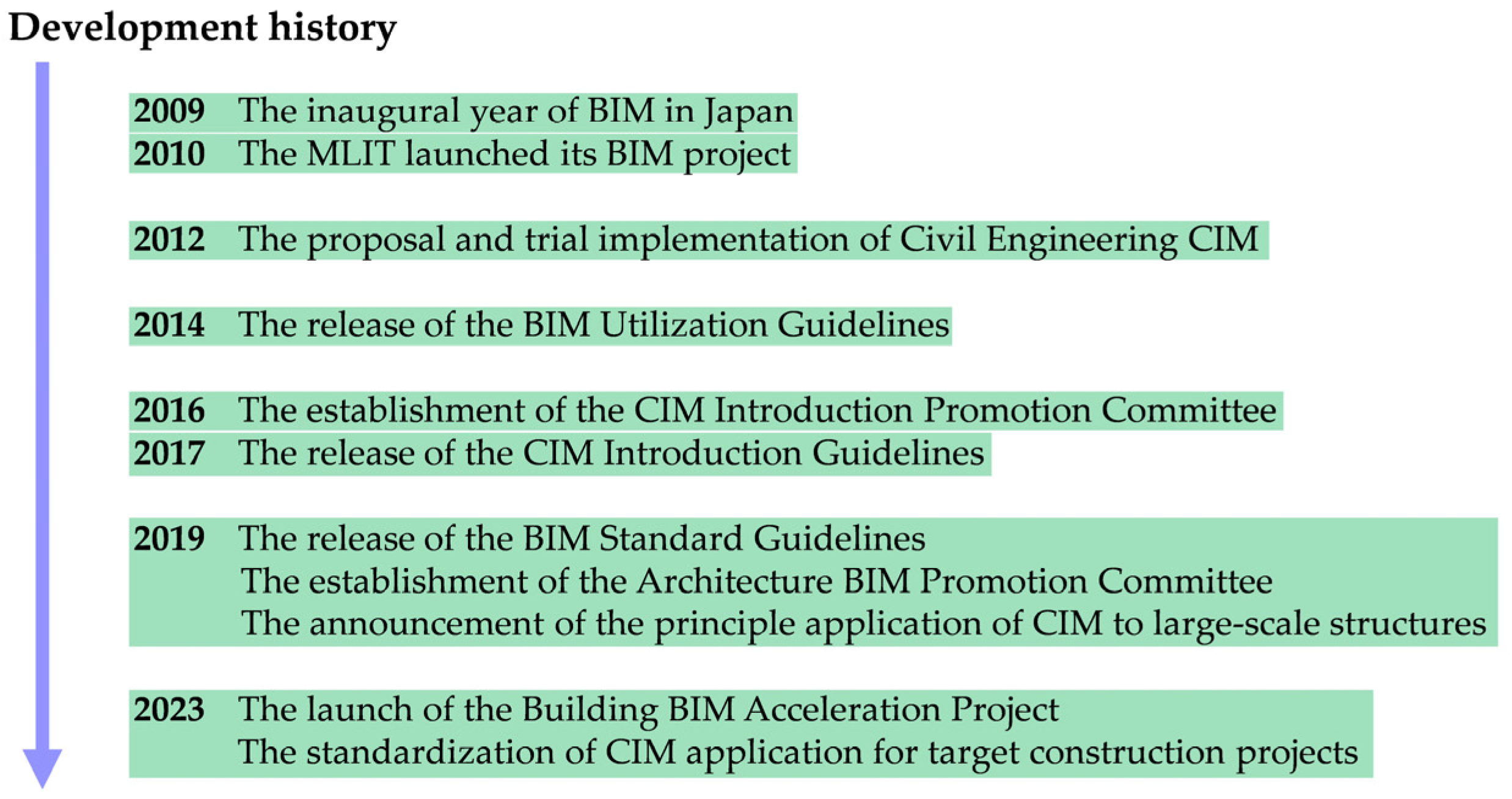
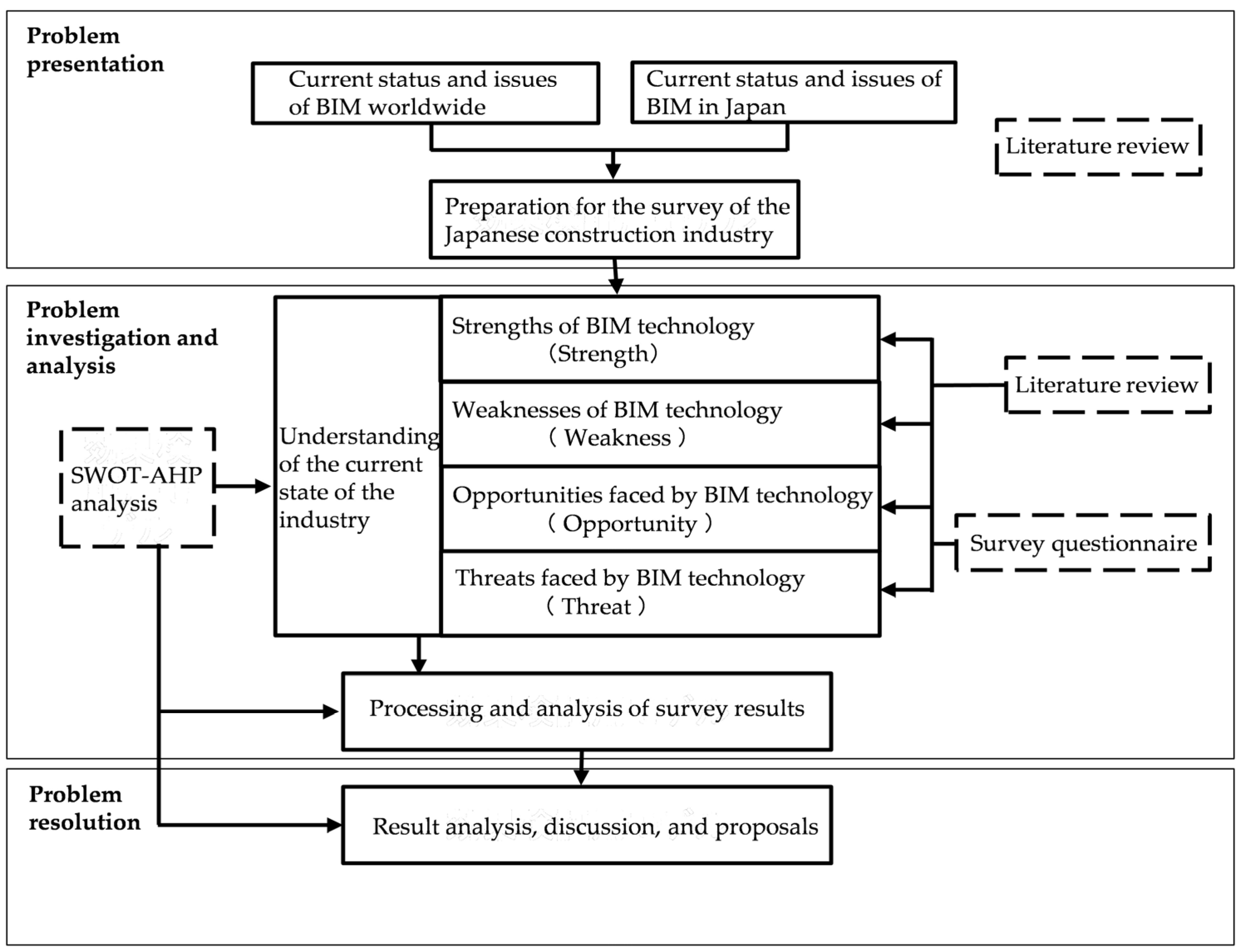
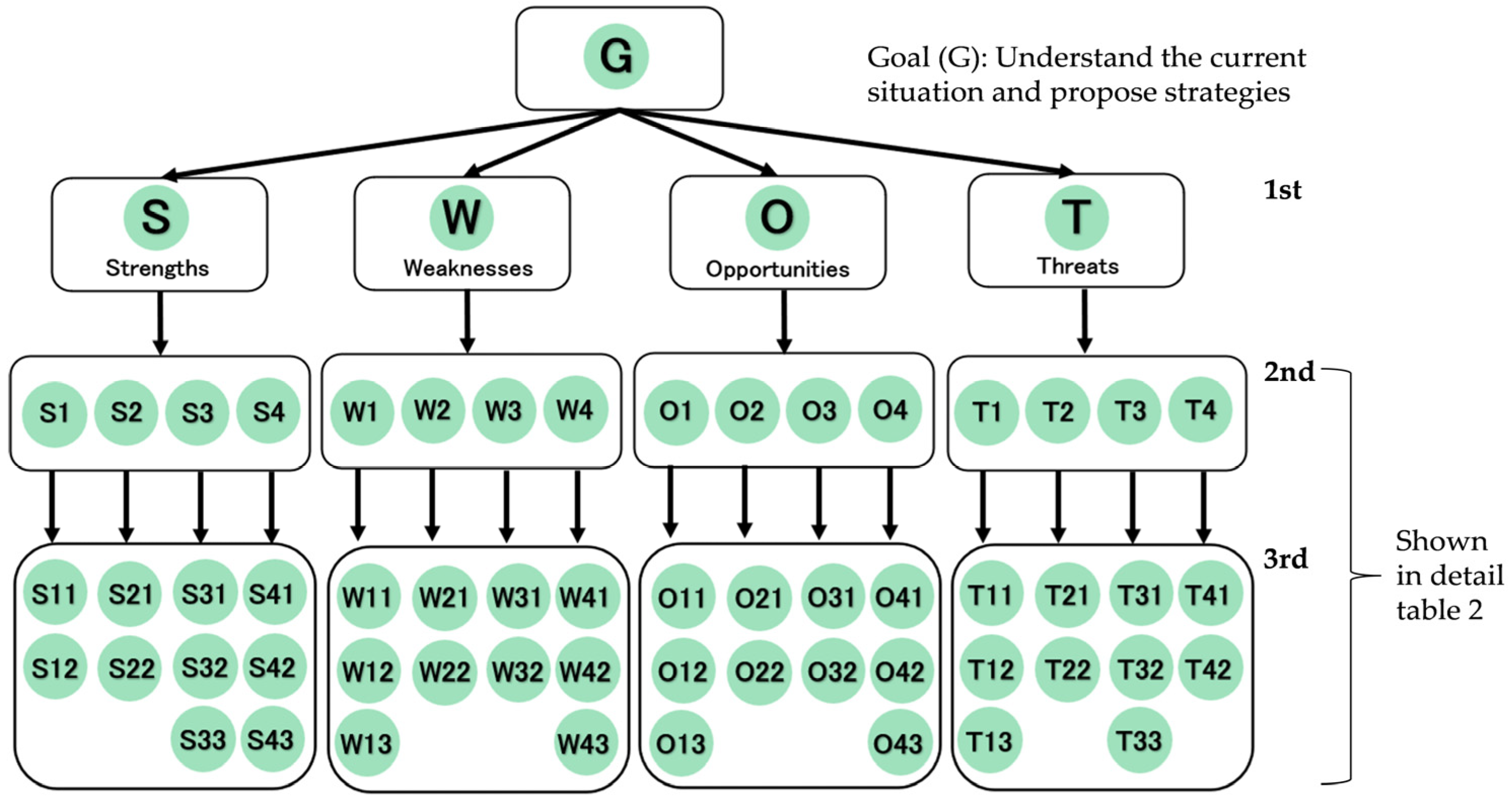

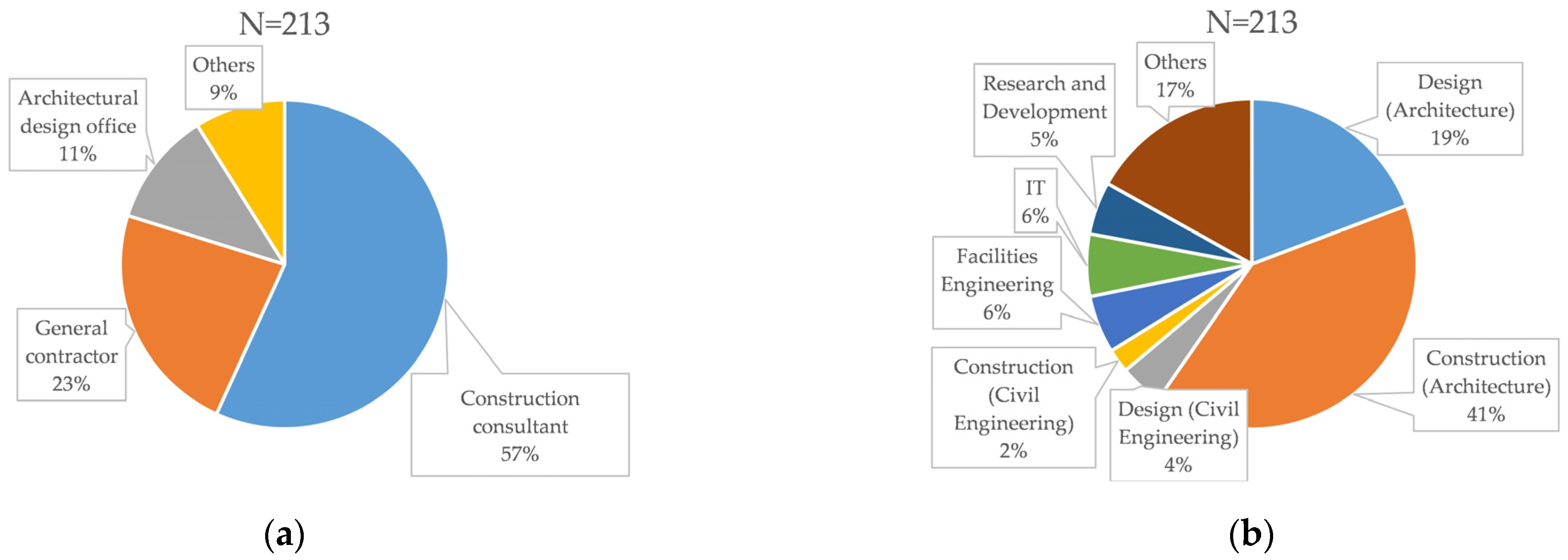
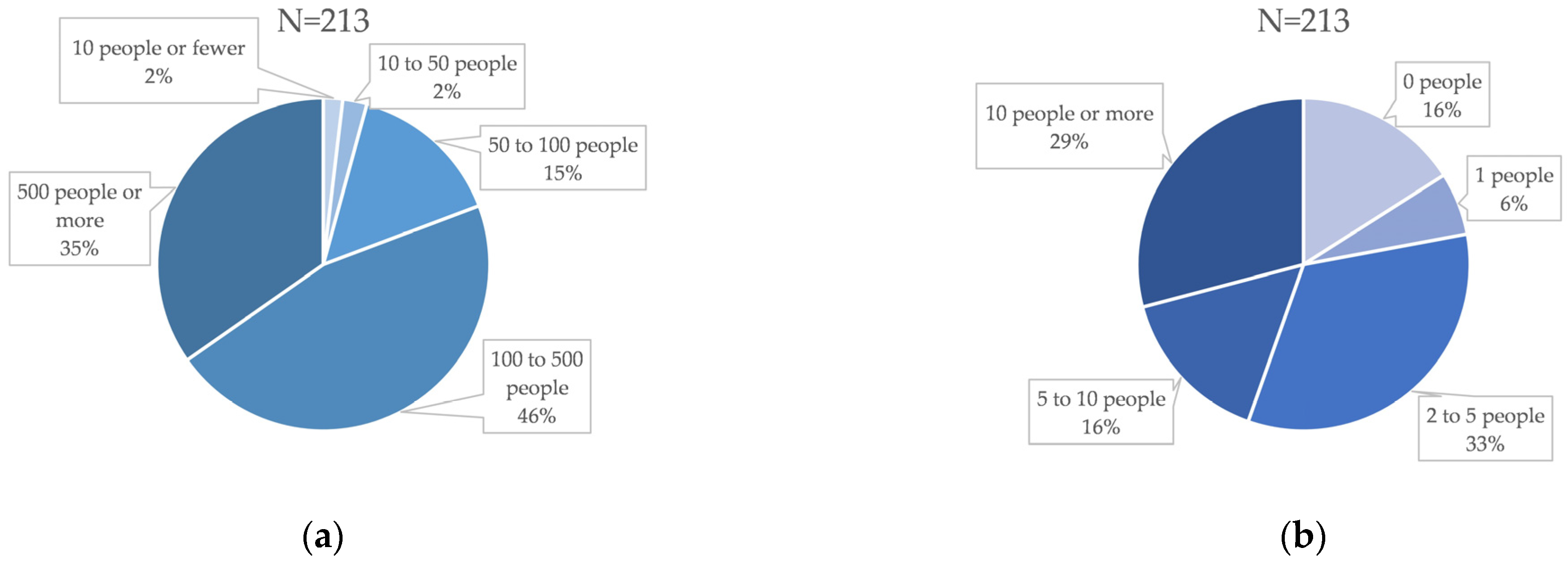
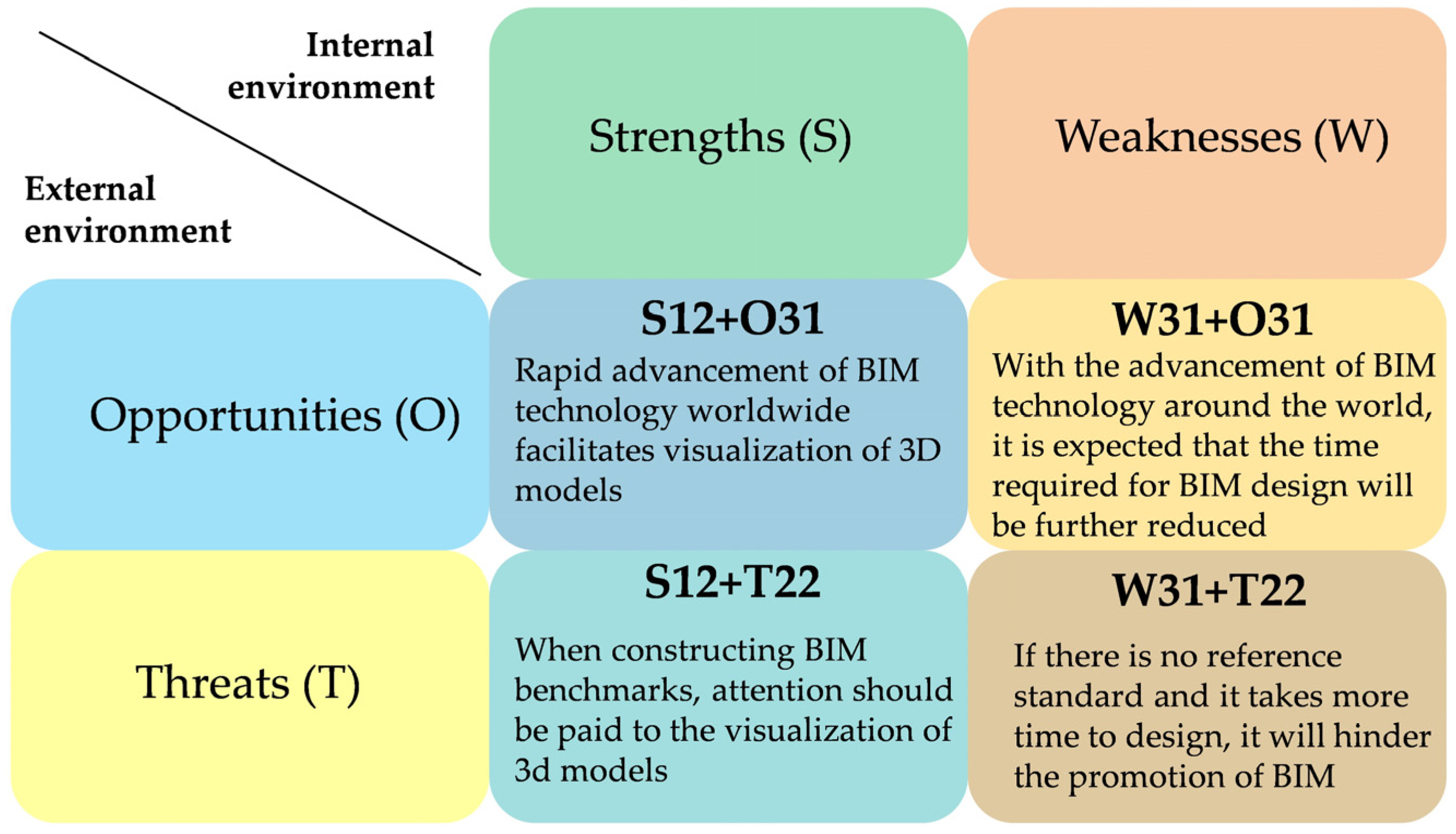
| Authors and Year | Industry | Purpose |
|---|---|---|
| [19] Kurttila et al. (2000) | Forestry | Improving forestry strategic planning processes |
| [20] Görener et al. (2012) | Manufacturing | Identifying critical impact factors in manufacturing firms |
| [21] Lee et al. (2021) | Aerospace | Determining key factors to meet public sector needs and revitalize private enterprises |
| [22] Shrestha et al. (2004) | Agriculture | Providing insights for policy development related to forestry and pasture practices |
| [23] Xu et al. (2019) | Construction | Determining the sequence of choices for large-scale assembly enterprises in construction supply chain management |
| [24] Nguyen et al. (2024) | Public Investment | Proposing implementation strategies and specific solutions for public investment projects |
| 1st | 2nd | 3rd |
|---|---|---|
| S | S1 Rational decision-making | S11 Rational project planning through overall digitalization |
| S12 Accurate decision-making through 3D visualization | ||
| S2 Design optimization | S21 Efficiency in cost estimation through automatic quantity calculation | |
| S22 Error reduction and quality assurance via clash detection | ||
| S3 Advanced construction management | S31 Preliminary examination of construction and maintenance | |
| S32 Reflecting construction data in the model | ||
| S33 Construction outcomes verified by integrating measuring devices | ||
| S4 Integrated information management | S41 Accurate understanding of construction costs and progress status | |
| S42 Enhanced information sharing among stakeholders | ||
| S43 Data tracking for operation and maintenance management | ||
| W | W1 Cost issues | W11 High cost of BIM software usage |
| W12 High labor costs associated with BIM | ||
| W13 High training costs for BIM personnel | ||
| W2 Software quality issues | W21 Low compatibility between different manufacturers’ software | |
| W22 Inadequate 3D data distribution and utilization systems | ||
| W3 Time requirement issues | W31 BIM takes longer for design compared to traditional methods | |
| W32 BIM requires more time for design revisions | ||
| W4 Project management efficiency issues | W41 Not significantly more efficient than 2D | |
| W42 Need to redefine management responsibilities among stakeholders | ||
| W43 Long-term data updating and maintenance required | ||
| O | O1 Promotion by the government and the MLIT | O11 Policy support for standardization and industrialization of construction |
| O12 Active promotion of green building development by the government and the MLIT | ||
| O13 Promotion of BIM application in the precast sector by the government and the MLIT | ||
| O2 Development of society and the construction industry | O21 There is a nationwide environment conducive to innovation | |
| O22 Local governments and private companies are actively advancing the establishment of BIM centers | ||
| O3 Global development of BIM technology | O31 Rapid development of new BIM technologies worldwide | |
| O32 There are many referenceable cases abroad | ||
| O4 An excellent environment for digital transformation (DX) in the construction industry | O41 Improvement in the performance of equipment such as computers | |
| O42 Numerous BIM-related software programs are being developed | ||
| O43 The new generation of construction industry workers has strong capabilities in utilizing information technology | ||
| T | T1 Awareness issues among construction industry workers | T11 Unable to directly generate economic benefits |
| T12 Lack of cooperation among clients, designers, and contractors (difficulty in ensuring usage by all parties) | ||
| T13 Resistance to innovation in the construction industry | ||
| T2 Issues with standard specifications | T21 Lack of legal regulations related to BIM | |
| T22 Lack of unified BIM construction standards | ||
| T3 Current issues in the construction industry | T31 Existing CAD (2D) meets design and drawing requirements | |
| T32 The cost of implementing and using BIM is high | ||
| T33 Project plans are frequently revised, and design changes take time | ||
| T4 Human resource supply issues | T41 There are limited and insufficient educational opportunities on BIM technology in schools | |
| T42 Training BIM specialists within companies takes a significant amount of time |
| Allocate | Explanation |
|---|---|
| 1 (No advantage) | Generally important within the category of development strategy indicators |
| 3 (Slightly advantageous) | Relatively important within the category of development strategy indicators |
| 5 (General advantage) | Clearly important within the category of development strategy indicators |
| 7 (Considerable advantage) | Highly important within the category of development strategy indicators |
| 9 (Significant advantage) | Extremely important within the category of development strategy indicators |
| 2, 4, 6, 8 | Intermediate value between the adjacent judgments mentioned above |
| n | 1 | 2 | 3 | 4 | 5 | 6 | 7 | 8 |
| RI | 0 | 0 | 0.58 | 0.89 | 1.12 | 1.24 | 1.32 | 1.41 |
| Item | Points | Item | Points | Item | Points | Item | Points |
|---|---|---|---|---|---|---|---|
| S1 | 6.39 | W1 | 6.49 | O1 | 5.77 | T1 | 6.82 |
| S2 | 4.87 | W2 | 5.35 | O2 | 6.22 | T2 | 6.27 |
| S3 | 5.28 | W3 | 5.89 | O3 | 6.17 | T3 | 6.14 |
| S4 | 5.71 | W4 | 5.03 | O4 | 6.30 | T4 | 6.90 |
| Item | Points | Item | Points | Item | Points | Item | Points |
|---|---|---|---|---|---|---|---|
| S11 | 5.76 | W11 | 6.79 | O11 | 5.42 | T11 | 5.18 |
| S12 | 7.10 | W12 | 5.83 | O12 | 4.90 | T12 | 6.57 |
| S21 | 5.30 | W13 | 6.37 | O13 | 5.87 | T13 | 4.69 |
| S22 | 6.45 | W21 | 6.42 | O21 | 4.65 | T21 | 5.36 |
| S31 | 6.04 | W22 | 6.55 | O22 | 4.90 | T22 | 6.16 |
| S32 | 4.93 | W31 | 6.18 | O31 | 6.07 | T31 | 4.69 |
| S33 | 5.49 | W32 | 5.56 | O32 | 5.04 | T32 | 6.84 |
| S41 | 4.89 | W41 | 4.68 | O41 | 6.76 | T33 | 6.21 |
| S42 | 6.88 | W42 | 5.39 | O42 | 5.75 | T41 | 5.58 |
| S43 | 5.00 | W43 | 5.54 | O43 | 6.21 | T42 | 6.78 |
| S1 | S2 | S3 | S4 | Ranking | ||
|---|---|---|---|---|---|---|
| 0.2892 | 0.2203 | 0.2321 | 0.2584 | |||
| S11 | 0.44814 | 0.1296 | 2 | |||
| S12 | 0.55186 | 0.4596 | 1 | |||
| S21 | 0.45119 | 0.0994 | 5 | |||
| S22 | 0.54881 | 0.1209 | 3 | |||
| S31 | 0.36689 | 0.0851 | 6 | |||
| S32 | 0.29962 | 0.0695 | 10 | |||
| S33 | 0.33349 | 0.0774 | 7 | |||
| S41 | 0.29159 | 0.0754 | 9 | |||
| S42 | 0.41000 | 0.1060 | 4 | |||
| S43 | 0.29841 | 0.0771 | 8 |
| W1 | W2 | W3 | W4 | Ranking | ||
|---|---|---|---|---|---|---|
| 0.2898 | 0.2387 | 0.2467 | 0.2248 | |||
| W11 | 0.35727 | 0.1035 | 5 | |||
| W12 | 0.30706 | 0.0890 | 7 | |||
| W13 | 0.33567 | 0.0973 | 6 | |||
| W21 | 0.49509 | 0.1182 | 3 | |||
| W22 | 0.50491 | 0.1205 | 2 | |||
| W31 | 0.52649 | 0.1299 | 1 | |||
| W32 | 0.47351 | 0.1168 | 4 | |||
| W41 | 0.2996 | 0.0674 | 10 | |||
| W42 | 0.34521 | 0.0776 | 9 | |||
| W43 | 0.35519 | 0.0799 | 8 |
| O1 | O2 | O3 | O4 | Ranking | ||
|---|---|---|---|---|---|---|
| 0.2360 | 0.2543 | 0.2521 | 0.2576 | |||
| O11 | 0.33469 | 0.0790 | 9 | |||
| O12 | 0.30245 | 0.0714 | 10 | |||
| O13 | 0.36286 | 0.0856 | 6 | |||
| O21 | 0.48695 | 0.1239 | 3 | |||
| O22 | 0.51305 | 0.1305 | 2 | |||
| O31 | 0.54604 | 0.1376 | 1 | |||
| O32 | 0.45396 | 0.1144 | 4 | |||
| O41 | 0.36132 | 0.0931 | 5 | |||
| O42 | 0.30702 | 0.0791 | 8 | |||
| O43 | 0.33166 | 0.0854 | 7 |
| T1 | T2 | T3 | T4 | Ranking | ||
|---|---|---|---|---|---|---|
| 0.4512 | 0.5488 | 0.2350 | 0.3669 | |||
| T11 | 0.31515 | 0.1422 | 6 | |||
| T12 | 0.39946 | 0.1802 | 4 | |||
| T13 | 0.28540 | 0.1288 | 7 | |||
| T21 | 0.46520 | 0.2553 | 2 | |||
| T22 | 0.53480 | 0.2935 | 1 | |||
| T31 | 0.26442 | 0.0621 | 10 | |||
| T32 | 0.38554 | 0.0906 | 8 | |||
| T33 | 0.35004 | 0.0823 | 9 | |||
| T41 | 0.45115 | 0.1655 | 5 | |||
| T42 | 0.54885 | 0.2014 | 3 |
| SWOT Category | Adjusted Indicator | Original Weight | Adjusted Weight Range (±10%) | Score Range | Range of Variation |
|---|---|---|---|---|---|
| Strengths | S11 | 0.1296 | [0.11664, 0.14256] | [0.53028, 0.64812] | 0.11784 |
| S12 | 0.4596 | [0.41364, 0.50556] | |||
| Weaknesses | W31 | 0.1299 | [0.11691, 0.14289] | [0.22536, 0.27544] | 0.05008 |
| W22 | 0.1205 | [0.10845, 0.13255] | |||
| Opportunities | O31 | 0.1376 | [0.12384, 0.15136] | [0.24129, 0.29491] | 0.05362 |
| O22 | 0.1305 | [0.11745, 0.14355] | |||
| Threats | T22 | 0.2935 | [0.26415, 0.32285] | [0.49392, 0.60368] | 0.10976 |
| T21 | 0.2553 | [0.22977, 0.28083] |
Disclaimer/Publisher’s Note: The statements, opinions and data contained in all publications are solely those of the individual author(s) and contributor(s) and not of MDPI and/or the editor(s). MDPI and/or the editor(s) disclaim responsibility for any injury to people or property resulting from any ideas, methods, instructions or products referred to in the content. |
© 2024 by the authors. Licensee MDPI, Basel, Switzerland. This article is an open access article distributed under the terms and conditions of the Creative Commons Attribution (CC BY) license (https://creativecommons.org/licenses/by/4.0/).
Share and Cite
Rui, S.; Makanae, K.; Fujiu, M.; Morisaki, Y. SWOT-AHP Analysis of BIM Technology Utilization in the Japanese Construction Industry. Buildings 2024, 14, 3549. https://doi.org/10.3390/buildings14113549
Rui S, Makanae K, Fujiu M, Morisaki Y. SWOT-AHP Analysis of BIM Technology Utilization in the Japanese Construction Industry. Buildings. 2024; 14(11):3549. https://doi.org/10.3390/buildings14113549
Chicago/Turabian StyleRui, Sucheng, Koji Makanae, Makoto Fujiu, and Yuma Morisaki. 2024. "SWOT-AHP Analysis of BIM Technology Utilization in the Japanese Construction Industry" Buildings 14, no. 11: 3549. https://doi.org/10.3390/buildings14113549
APA StyleRui, S., Makanae, K., Fujiu, M., & Morisaki, Y. (2024). SWOT-AHP Analysis of BIM Technology Utilization in the Japanese Construction Industry. Buildings, 14(11), 3549. https://doi.org/10.3390/buildings14113549






